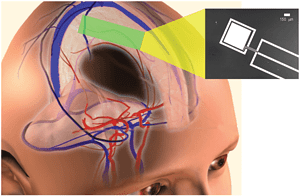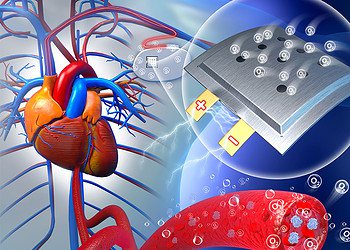
A team of researchers at MIT have successfully manage to fabric a fuel cell capable of running on glucose, which scientists envision will power highly efficient medical implants in the brain that can help paralyzed patients express motor functions again. The outputted power is in the microwatt range, but despite its low range, scientists claim it’s just enough to fuel tiny devices.
A similar idea was expressed in the 1970s, when scientists demonstrated they could power a pacemaker which ran on a glucose powered fuel cell. The concept was soon abandoned in favor of the much more powerful lithium-ion batteries. These glucose fuel cells also used enzymes that proved to be impractical for long-term implantation in the body.
The MIT design uses a fuel cell on a silicon chip, the same technology used to make semiconductor electronic chips, with no biological components, allowing it to be integrated with other circuits that would be needed for a brain implant. The power conversion occurs due to a clever platinum catalyst, a biocompatible material, which strips the electrons from glucose, mimicking enzyme activity that break down glucose to generate ATP – the energy of cells. The researchers claim that the glucose fuel cell could get all the sugar it needs from the cerebrospinal fluid (CSF) that bathes the brain and protects it from banging into the skull.
Tests so far have shown that the fuel cell can generate power in the range of hundred of microwatts – quite enough to power ultra-low-power and clinically useful neural implant, according to the researchers. Scientists warrant, however, that we’re quite a few years from seeing this kind of technology applied in medical practice.
“It will be a few more years into the future before you see people with spinal-cord injuries receive such implantable systems in the context of standard medical care, but those are the sorts of devices you could envision powering from a glucose-based fuel cell,” says Benjamin Rapoport, a former graduate student in the Sarpeshkar lab and the first author on the new MIT study.
The findings were published in the journal PLoS ONE.
via Kurzweil






